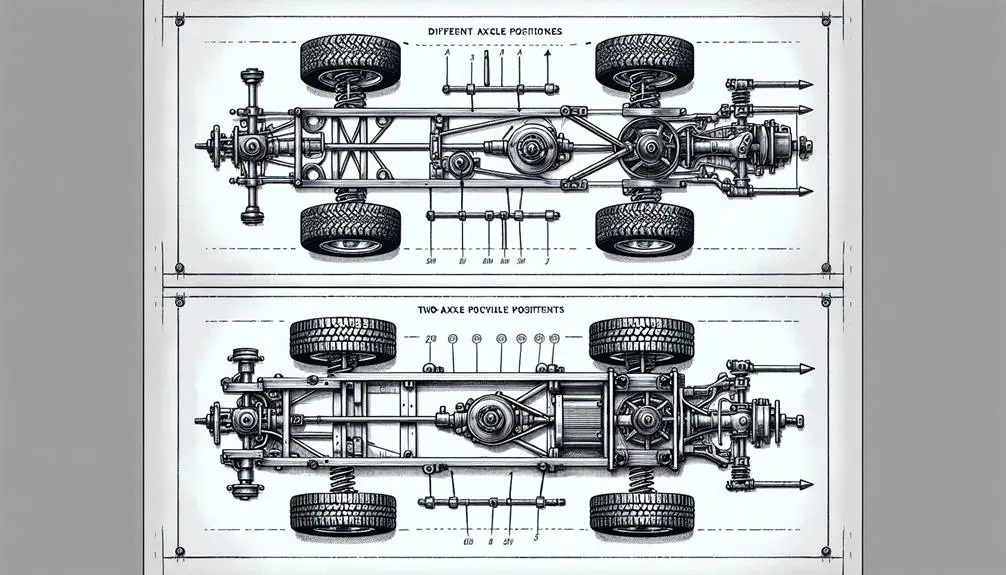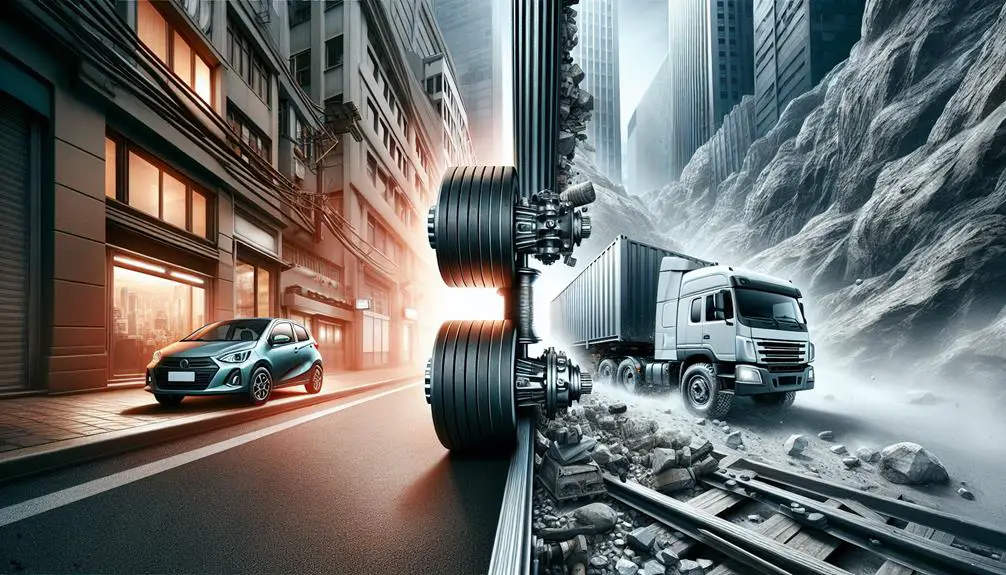The primary difference between 1 axle and 2 axle vehicles lies in their stability, performance, and maintenance needs.
Single axle vehicles are generally lighter and less complex, while two axles offer improved stability and can handle heavier loads.
Defining Axles

An axle is a shaft that connects to the wheels of a vehicle, allowing them to rotate. It's essential for carrying the vehicle's weight and moving it by transferring engine power to the wheels.
Vehicles have at least one axle. The number of axles depends on the vehicle's size, type, and use. A 1 axle vehicle has one axle for two wheels, common in small vehicles like motorcycles or bicycles. A 2 axle vehicle has two axles, each for a pair of wheels, typical in passenger cars and trucks. The front axle usually helps in steering, and the rear axle drives the vehicle forward, especially in models with rear-wheel drive.
Understanding axles helps in knowing how vehicles are designed and how they work. Different axle setups offer various benefits for the vehicle's purpose and driving experience.
Vehicle Stability
Knowing how many axles your vehicle has is important for understanding its stability. This affects how safe and smooth your drive is.
Vehicles with one axle are simpler but less stable. This setup is common in small vehicles or motorcycles. They can tip over or lose balance more easily, especially during sharp turns or with heavy loads.
Vehicles with two axles are more stable. This design is used in cars, trucks, and larger vehicles. It spreads the weight more evenly, making the ride smoother and reducing the chance of tipping or rollovers. Two axles also help the vehicle handle bumps better, making for a safer drive.
Performance Implications

The number of axles in a vehicle affects its acceleration, handling, and fuel efficiency.
Vehicles with one axle are lighter, which allows them to accelerate faster and use less fuel, saving money on gas.
Vehicles with two axles handle better, especially in difficult conditions or when turning sharply, because they're more stable and have better weight distribution.
Over time, vehicles with more axles may maintain their performance better because the wear and tear are spread out across more wheels, preventing sudden performance drops.
Maintenance Considerations
When choosing between a vehicle with one axle and one with two axles, it's important to know how this choice affects maintenance. Here's a comparison:
| Feature | 1 Axle | 2 Axles |
|---|---|---|
| Tire Wear | Less even | More even |
| Fuel Efficiency Impact | Lower | Higher |
| Parts Replacement Cost | Usually lower | Usually higher |
| Maintenance Frequency | Less often | More often |
| Maintenance Complexity | Simpler | More complex |
Vehicles with one axle typically have less even tire wear because the weight and movement aren't as well distributed as in vehicles with two axles. This might lead to needing tire changes or rotations more often to prevent uneven wear.
Vehicles with more axles have more parts, which can mean a higher chance of something failing and therefore a greater need for maintenance. Even though this might improve weight distribution and fuel efficiency, it also means maintenance is more complex and needed more often.
Choosing the right axle count depends on what you prioritize: lower maintenance costs and simplicity or potentially better fuel efficiency with higher maintenance demands.
Use Cases Comparison

When choosing between 1 axle and 2 axle vehicles, consider where you'll be driving and what you'll be carrying. For city driving with lighter loads, a 1 axle vehicle is better. They're easier to maneuver in tight spaces, easier to park, and use less fuel for short trips with frequent stops.
However, if you need to drive off-road or carry heavy loads, a 2 axle vehicle is more suitable. They're more stable and strong, making them safer and better at handling heavy loads. This is especially useful for towing equipment or carrying heavy goods over challenging terrains.
For families on road trips or camping, and professionals in construction or landscaping who transport heavy materials, a 2 axle vehicle provides extra comfort and security.
Conclusion
When you're deciding between a vehicle with 1 axle or 2 axles, think about what you need. Vehicles with 1 axle use less fuel and are easier to take care of.
On the other hand, vehicles with 2 axles are better at staying steady and strong, especially when carrying heavy things or driving in tough conditions.
Think about how you drive and what you carry. Both choices have good points, but what's best for you depends on your own situation.